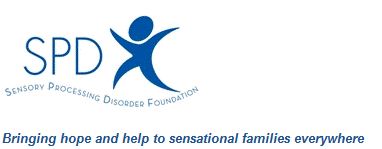New Study Supports Uniqueness of Sensory Processing Disorder
New Research on Sensory Over-Responsivity (SOR) suggests possible prenatal risk factors, genetic heritability, and supports uniqueness of Sensory Processing Disorder/SOR.
Dr. Hill Goldsmith, a member of the SPD Scientific Workgroup from the University of Wisconsin-Madison and his colleagues recently published two peer-reviewed manuscripts that evaluated the genetics of Sensory Over-Responsivity1, 2. The first study focuses on SOR at age two years and examines toddler temperament and prenatal risk factors. The second paper focuses on SOR at age seven years and examines distinctiveness of SOR with other diagnoses.
In the first paper1 1,026 pairs of twins were evaluated at two years of age. This study did not include any individuals with autism, fragile X, cerebral palsy, spina bifida, or Down syndrome, and 94.4% of the twins in the study were reported to be Caucasian. There were 348 monozygotic (i.e., identical), 358 dizygotic (i.e., fraternal) same-sex, and 320 dizygotic opposite-sex twin pairs. Caregiver reports were used to obtain information on temperament and SOR.
This study reported that at two years of age:
- Signs of negative temperament or distress reactions (e.g., anger, sadness, and more troublesome to sooth) and fear (e.g., fearful of objects and social situations in contrast to finding many situations pleasurable) were moderately correlated with auditory and tactile SOR symptoms.
- Prenatal complications significantly predicted tactile SOR symptoms. However, birth weight, length of stay in NICU, birth complications, neonatal complications, and neonatal morbidity were not associated with either tactile or auditory SOR.
- Girls with a male co-twin showed greater SOR at age two years than same-sex female dizygotic twins, suggesting a possible increase risk associated with in utero testosterone exposure.
- Both auditory and tactile SOR domains were heritable. Each SOR domain had a similar genetic relationship with temperamental fear and negative affect.
In summary, this study suggests that the causes and risk factors for tactile versus auditory SOR are to some degree unrelated to each other. Additionally, the findings indicate that prenatal factors should be further investigated, especially in relation to tactile SOR.
The second study2 evaluated SOR in relationship to other common diagnosis in seven-year-old children. The primary caregiver (mostly mother’s) of 970 children completed the Sensory Over-Responsivity Inventory3 and a diagnostic interview. Children with autism or pervasive developmental disorders were not included. The study included approximately equal numbers of female and male children and approximately equal numbers of monozygotic, same-sex dizygotic, and opposite-sex dizygotic twin pairs. The majority of the sample was Caucasian (83%), with 4% Hispanic, 4% African American, and 6% other. A limitation of this study was that a confirmatory diagnosis of SPD was not provided by clinicians or occupational therapists for those individuals who screened positive for SOR.
This study reported that at about seven years of age:
- A majority (58.2%) of individuals who screened positive for SOR did not qualify for a DISC diagnosis (Diagnostic Interview Schedule for Children; ADHD, conduct disorder, oppositional defiant disorder, agoraphobia, general anxiety, obsessive-compulsive disorder, panic disorder, separation anxiety, social phobia, specific phobia, depression, enuresis, trichtollomaniatics, selective mutism, pica).
- A majority (68.3%) of individuals who screened positive for a DISC diagnosis did not screen positive for SOR.
- Children who screened positive for SOR only and typical children had similar rates of physical health problems.
In summary, the results provide tentative support that SPD, and more specifically SOR, occurs independently of other recognized common childhood psychiatric diagnoses. However, SOR is also a relatively frequent comorbid condition with recognized diagnoses and possibly genetic factors contribute to this comorbidity.
- Keuler MM, Schmidt NL, Van Hulle CA, Lemery-Chalfant K, Goldsmith HH (2011). Sensory overresponsivity: prenatal risk factors and temperamental contributions. Journal of Developmental & Behavioral Pediatrics, 32(7):533-541.
- Van Hulle CA, Schmidt NL, Goldsmith HH (2011). Is sensory over-responsivity distinguishable from childhood behavior problems? A phenotypic and genetic analysis. Journal of Child Psychology and Psychiatry, [Epub ahead of print].
- Schoen SA, Miller LJ, Green KE (2008). Pilot study of the sensory over-responsivity scales: Assessment and inventory. American Journal of Occupational Therapy, 62:393-406.
PediaStaff is Hiring!
All JobsPediaStaff hires pediatric and school-based professionals nationwide for contract assignments of 2 to 12 months. We also help clinics, hospitals, schools, and home health agencies to find and hire these professionals directly. We work with Speech-Language Pathologists, Occupational and Physical Therapists, School Psychologists, and others in pediatric therapy and education.

